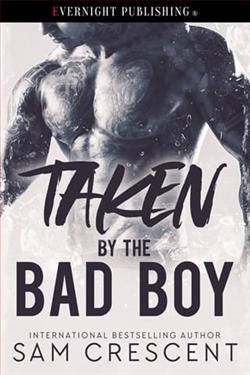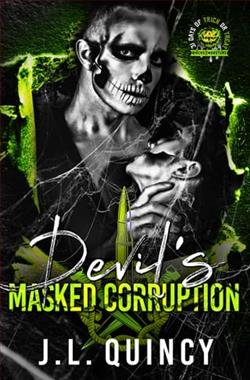Page 20 of U Is for Undertow (Kinsey Millhone 21)
I remembered reading about her disappearance at the time, but I hadn’t understood the enormity of the crime. What had she ever done to warrant the evil that must have been inflicted on her? I knew without having met the Fitzhughs that they’d doted on her, laughed at her unexpected comments, hugged her when injury or disappointment made her burst into tears. I shifted my focus, blotting out the sight of her face. Then I looked again. This was as much of her as I’d ever know, and there was no way to shield myself from the knowledge that she was gone. Her parents would never have peace of mind, even if her ultimate whereabouts were discovered. In some ways, I wasn’t sure what difference it would make. She was lost to them, the length and breadth of her life consigned to a few short years, beginning, middle, and end.
I forced myself to scrutinize the account of what happened that day. It all sounded so ordinary. The events leading up to her vanishing carried no hint of the horror to come. Mary Claire had been playing on the swing set in the Fitzhughs’ backyard while her mother sat on the back porch reading a book. The only sound on that summer day was the stutter of a leaf blower on the property next door. A landscape company had dropped off a one-man crew. She hadn’t actually seen him arrive, but she could hear him working his way up the drive, clearing the pavement of grass clippings from the lawn he’d mowed. The phone rang. Mrs. Fitzhugh set her book aside and went into the kitchen, where she picked up the handset mounted on the wall near the door to the dining room. The location of the phone prevented her from maintaining visual contact with the child, but the entire yard was fenced and there was no reason to think she was at risk.
The caller introduced himself, claiming he was a sales representative, conducting a brief survey. Mrs. Fitzhugh agreed to answer a few questions. Later she had no recollection of the caller’s name or the name of his company. He hadn’t identified the product he was promoting, but his questions were focused on the number of television sets in the house, the number of hours they were turned on, and the family’s program preferences. In all, no more than four minutes elapsed between the time she took the call and the moment the salesman thanked her and disengaged.
When she returned to the porch, she noticed Mary Claire was no longer on the swing. She scanned the yard—sandbox, playhouse, shallow plastic wading pool—but Mary Claire wasn’t visible anywhere. Puzzled, but not alarmed, Mrs. Fitzhugh called her name, but received no response. She went back into the house, thinking Mary Claire might have slipped in unseen while her attention was focused on the interview questions. When it became clear Mary Claire wasn’t in the house, her mother returned to the yard and circled the perimeter, checking the shrubbery near the back fence. She peered into the playhouse, which was empty, and then continued around the house. She went through the gate, still calling Mary Claire’s name, more alarmed as every minute passed. Frantic, she ran next door and knocked at the neighbor’s house, but no one was home.
Mrs. Fitzhugh returned to the house, intending to call her husband and then phone the police. As she climbed the back steps, she spotted the note that had apparently been left on the side table and consequently fluttered to the floor. The message was block-printed and brief. The kidnapper said her daughter was safe in his keeping and would be returned unharmed in exchange for twenty-five thousand dollars in cash. If the Fitzhughs made any attempt whatever to contact the police or the FBI, the kidnappers would know and Mary Claire would forfeit her life.
All of this became public knowledge four days after the child had been taken. In the interim, the FBI questioned Mary Claire’s parents, who were white-faced and stunned. After the news broke, neighbors, friends, and acquaintances were interviewed, many of them more than once. The case attracted its share of national attention because it involved the only child of a prominent Santa Teresa couple. After the first splash, however, the coverage became repetitive, which suggested that the FBI had cut off the stream of information to the media. No FBI agent was referred to by name, nor was there any mention of investigators at the local level. The Santa Teresa Police Department’s community relations officer issued a statement from time to time, reassuring the public that the investigation was ongoing and that every effort was being made to identify the suspects and recover the child.
As with any major crime, certain critical details were withheld from the public, leaving investigators a means of weeding out the off-kilter citizen, driven by a need to confess. There was no further reference to suspects or persons of interest, though detectives must have combed the area, talking to pedophiles, registered sex offenders, and anyone else whose criminal history seemed relevant. The FBI received tips, sightings of the child in places all across the country. There were also countless calls reporting suspicious behavior on the part of strangers, who’d done no harm at all and whose actions were innocent. Mary Claire Fitzhugh had been swept into the Inky Void and there was no coming back.







